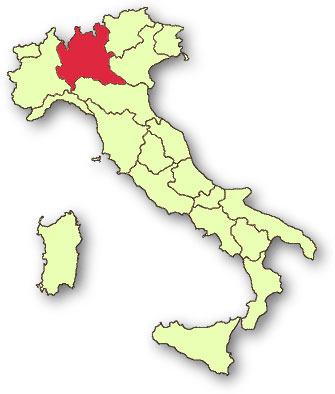Fresh vegetables and their ready-to-eat (RTE) salads have become increasingly recognized as potential vehicles for foodborne diseases. The EU Reg. 1441/2007 establishes microbiological criteria for bacterial pathogens for products placed on the market during their shelf-life for pre-cut fruits and vegetables (RTE) whilst it does not address the problem of contamination by enteric viruses.
Ready-To-Eat Virus Contamination
In this study contamination by :- hepatitis A virus (HAV),
- hepatitis E virus (HEV) and
- norovirus (NoV)
 |
| Apulia, Italy |
 |
| Lombardia, Italy |
The vegetable samples were tested using validated real-time PCR.
Prevalence of foodborne Hepatitis Virus
The total prevalence of HAV and HEV was 1.9% (18/911) and 0.6% (6/911), respectively. The detection of HAV and HEV in RTE salads highlights a risk to consumers and the need to improve production hygiene. Appropriate implementation of hygiene procedures is required at all the steps of the RTE vegetable production chain.This should include monitoring of emerging viral pathogens.
Presence of Norovirus &Adenovirus on Environmental Surfaces
Norovirus (NoV) gastroenteritis outbreaks appear frequently in food service operations (FSOs), such as in restaurants and canteens. In this study the presence of NoV and adenovirus (AdV) genomes was investigated on the surfaces of premises, especially in kitchens, of 30 FSOs where foodborne gastroenteritis outbreaks were suspected. The objective was to establish a possible association between the presence of virus genomes on surfaces and a visual hygienic status of the FSOs. NoV genome was found in 11 and AdV genome in 8 out of 30 FSOs.
Positive swabbing with Norovirus and Adenovirus
Swab sampling method have been developped to address the issue In total, 291 swabs were taken, of which 8.9% contained NoV and 5.8% AdV genome. The study suggests that- swabbing is necessary for revealing viral contamination of surfaces
- emphasis of hygiene inspections should be on the food handling procedures,
- the education of food workers on virus transmission is key.
Norovirus cross-contamination during preparation of fresh produce
The goal of this study was to examine cross-contamination of a HuNoV surrogate, murine norovirus (MNV-1), during common procedures used in preparing fresh produce in a food service setting, including turning water spigots, handling and chopping Romaine lettuce, and washing hands. The data gathered indicate that MNV-1 transfers readily between common surfaces during food preparation.The Federation of Commerce and Distribution and Foodborne virus
The Federation of Commerce and Distribution in France, a Professional Group gathering supermarkets (retail shops), publishes GUIDELINES for the control of Norovirus and Hepatitis A Virus in many food matrices, including Frozen Fruits, Scallops, Live bivalve shellfish, Herbs and salads (leafy greens).Foodborne Virus and Regulations in Europe

CE/2073/2005
Foodstuffs should not contain micro-organisms or their toxins or metabolites in quantities that present an unacceptable risk for human health, according to CE/2073/2005.CE/669/2009
Frozen raspberries (food) originating from Serbia at a control frequency of 10% due to their possible contamination with norovirus (CE) n°669/2009HACCP and Control Plan for Foodborne Virus
The main reasons for using HACCP are to implement food safety management and prevent food safety hazards. By identifying where hazards are most likely to occur in the operation it will be much easier to put in place the measures needed to prevent those hazards, especially the ones concerned by Foodborne viruses (Norovirus and Hepatitis A Virus). In addition, food safety incidents, such as the Pomegranate seeds contamination by HAV, or the Frozen Strawberries originating from Egypt and contaminated by Hepatitis A Virus, can be prevented by an effective HACCP system.Virus Outbreaks in Europe in 2017
 |
| Norovirus and Hepatitis A Virus Outbreaks in Europe in 2017 |
Molluscs, Fruits and Vegetable have been implicated in outbreaks in 2017, originating from no less than seven countries. Norovirus was the most common foodborne virus (92%). Italy has been the greatest provider of Alerts in the Rapid Alert System for Food and Feed so far.
Sources :
- Pubmed
- RASFF
- European Union
- FCD
- EFSA


Aucun commentaire:
Enregistrer un commentaire